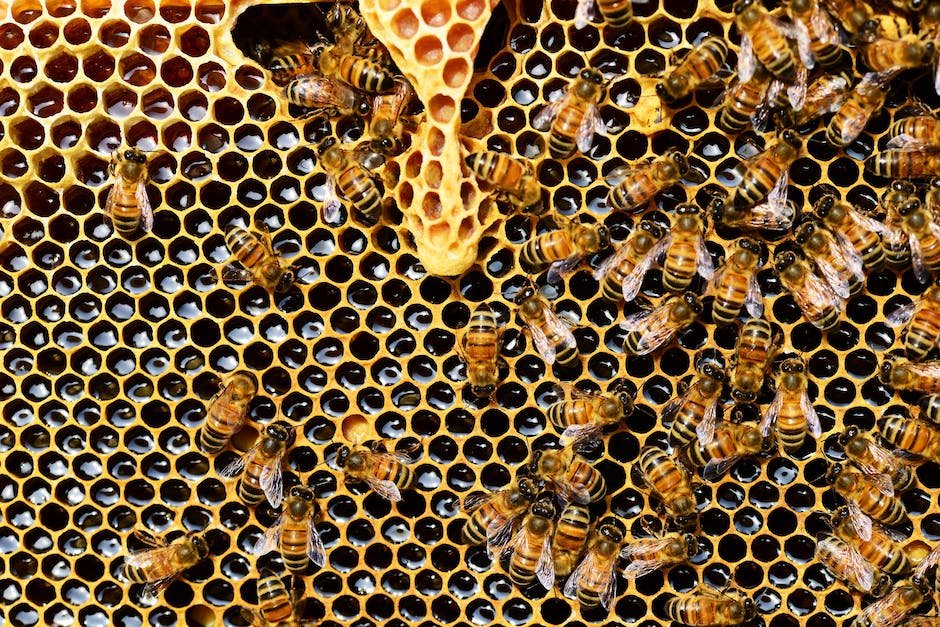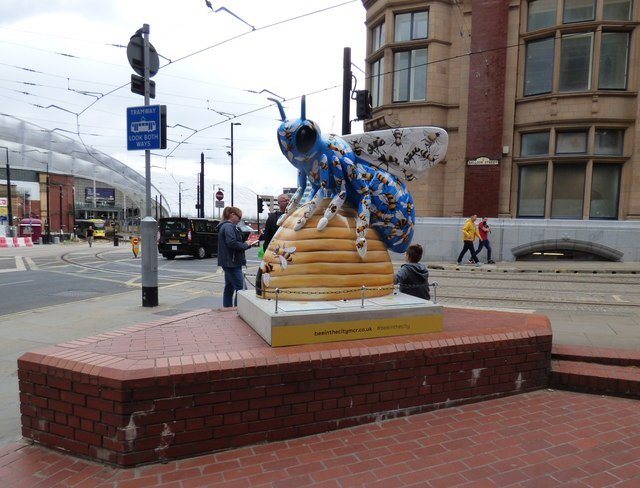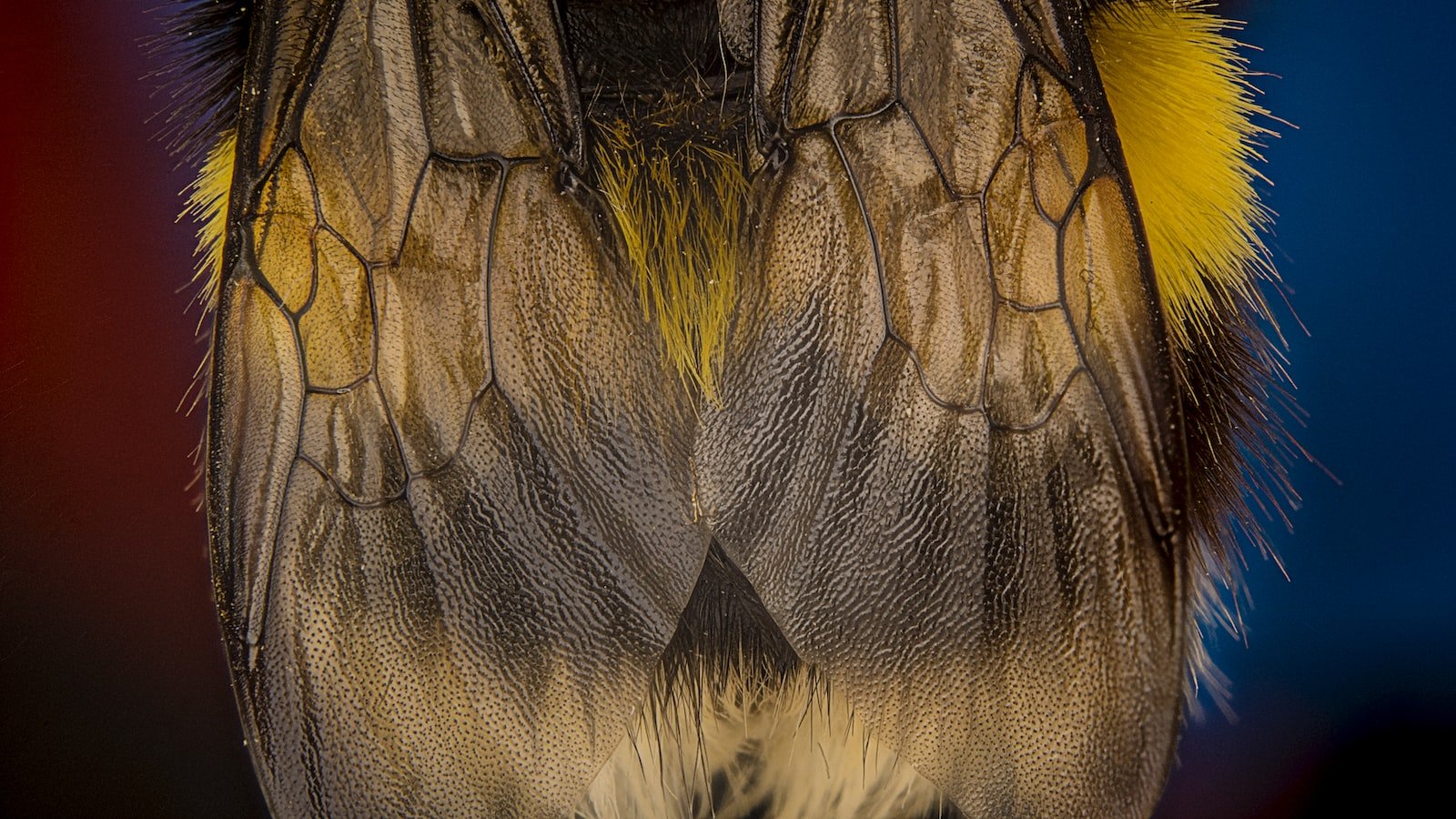Beneath the shimmering rays of the summer sun, a delicate dance takes place amidst the blossoming fields. In this enchanting spectacle, bees hum through the air, elegantly flitting from one vibrant flower to another. While their mesmerizing flight may capture our attention, it is the secret language they communicate that truly astonishes. Bees, these unassuming creatures, possess a remarkable ability to convey vital information to their peers, particularly when it comes to the collection of water—a seemingly mundane task, yet of immense importance to the survival and prosperity of their hive. As we delve into the depths of their intricately woven communication web, we unlock a treasure trove of knowledge, revealing the essential role that the exchange of information plays in the bees’ extraordinary world.
Table of Contents
- The Language of Bees: Unlocking the Secrets of Water Collection
- Decoding the Waggle Dance: A Fascinating Insight into Bee Communication
- Teamwork Makes the Dream Work: Enhancing Efficiency in Water Collection
- Preserving Bee Habitats: A Call to Action for Protecting Water Sources
- Harnessing Bee Communication: Practical Steps for Supporting Water Collection Efforts
- Q&A
- In Conclusion

The Language of Bees: Unlocking the Secrets of Water Collection
When it comes to the intricate world of bees, their language remains a fascinating mystery. Among their many intriguing behaviors, the process of water collection stands out as both essential and enigmatic. Bees, as diligent and resourceful creatures, have developed an intricate communication system that allows them to share valuable information about water sources.
The language of bees is truly a marvel. Through intricate dances known as the waggle dance, bees communicate the precise location, distance, and quality of a water source to their hive mates. This waggle dance acts as a map, guiding the other bees to the vital resource they desperately need for survival. Remarkably, the angle and duration of the dance reflects the direction and distance to the water source, while the intensity indicates the quality and suitability of the water.
To ensure their survival in the natural world, bees have mastered the art of effective communication. The waggle dance, a language understood only by their kind, is a testament to their intelligence and adaptability. As we delve deeper into the remarkable world of bees, we continue to unlock the secrets of their language, uncovering nature’s awe-inspiring ability to communicate and thrive.

Decoding the Waggle Dance: A Fascinating Insight into Bee Communication
Imagine a bustling hive, buzzing with life and purpose. In the midst of this organized chaos, bees engage in a mesmerizing form of communication known as the “waggle dance.” This unique behavior serves as a roadmap, guiding their fellow hive-mates to the location of a precious resource such as nectar or pollen. Let’s take a closer look at this fascinating dance and unravel the mysteries behind the language of bees.
1. The Dance of Direction: The waggle dance is a choreographed performance that relays critical information to other bees. This intricate movement involves a bee vigorously waggling its body in a figure-eight pattern while emitting specific pheromones. The direction in which the bee waggles indicates the location of the resource, with respect to the sun’s position.
2. Distance in the Dance: Not only does the waggle dance communicate direction, but it also conveys distance. The duration of the waggle phase signifies the approximate distance the honeybee traveled to find the resource. For instance, a longer waggle duration indicates a greater distance compared to a shorter one.
3. Exploring the Ineffable: Bees possess a remarkable ability to communicate complex information through simple gestures and chemical signals. Although we are still unraveling the precise details of this captivating dance, studying the waggle dance allows us to peer into the incredible world of bee communication and gain a deeper understanding of their sophisticated social structure.

Teamwork Makes the Dream Work: Enhancing Efficiency in Water Collection
Enhancing Efficiency in Water Collection
Water collection is a vital aspect of any community, especially in areas where access to clean water is limited. To ensure efficient water collection, it is essential to emphasize the power of teamwork. Working together not only increases productivity but also fosters a sense of unity and purpose among community members.
Here are some ways teamwork can enhance efficiency in water collection:
- Division of labor: By assigning specific roles to each team member, the workload can be divided effectively. Some could focus on collecting water, while others could handle filtration or transportation.
- Effective communication: Maintaining clear lines of communication is crucial for efficient water collection. Team members should establish a system to relay information and coordinate tasks, ensuring everyone is on the same page.
- Shared knowledge and skills: By pooling their knowledge and skills, team members can learn from one another, resulting in increased efficiency. Sharing techniques for water collection, identifying the best sources, or implementing innovative solutions can significantly improve the process.
In conclusion, teamwork plays a pivotal role in enhancing efficiency in water collection. By promoting collaboration, communities can maximize their efforts, leading to a more sustainable and reliable water supply, ultimately improving the quality of life for everyone involved. Together, we can make a significant difference in securing a brighter future for water accessibility.

Preserving Bee Habitats: A Call to Action for Protecting Water Sources
The urgency to conserve bee habitats and protect their water sources has reached a critical level. Bees play a vital role in pollination, ensuring the survival of countless plant species and maintaining biodiversity. However, their habitats are under threat due to various factors, including habitat loss, pollution, and climate change.
To address this pressing issue, we must take immediate action to protect the water sources that bees rely on for their survival. Here are some key steps we can take to make a difference:
1. Reduce water pollution: Contaminated water can severely impact bee populations. By implementing strict regulations on industrial waste disposal and promoting eco-friendly farming practices, we can minimize the pollution that reaches our water sources.
2. Create bee-friendly watering stations: Bees need access to clean water for hydration. By setting up small, shallow dishes filled with water and natural materials like rocks or twigs, we can provide them with safe drinking areas. Placing these watering stations near bee habitats will help ensure their accessibility.
3. Conserve water resources: Conserving water is not only beneficial for our planet but also critical for preserving bee habitats. Encouraging water-saving techniques such as drip irrigation, rainwater harvesting, and smart water management practices can help maintain the availability of water sources for bees and other wildlife.
Together, let’s prioritize the protection of bee habitats and their water sources. By taking these actions, we can secure a thriving environment for bees, promote biodiversity, and ultimately safeguard the future of our planet. Join the call to action and be a part of this crucial conservation movement.
Harnessing Bee Communication: Practical Steps for Supporting Water Collection Efforts
Supporting water collection efforts is an essential task that can contribute to the resilience and survival of bee colonies. Through the fascinating world of bee communication, we can unlock practical steps to ensure a successful and efficient water collection process. Here are some guidelines to assist in harnessing this remarkable communication system:
- Create a water source: Establish a reliable water source near the bee colony. This can be achieved by setting up a shallow water container or a small birdbath with fresh water. Providing water nearby reduces the distance and energy required for bees to collect water, enhancing overall productivity.
- Enhance visibility: Bees rely on visual cues to locate water sources. To make it easier for them, place brightly colored objects or flowers near the water source. This will help them quickly identify and remember its location.
- Use scent markers: Introduce enticing scents near the water source to attract bees. A few drops of essential oils, such as lavender or citrus, can be added to the water container. Bees are naturally attracted to certain aromas, which will serve as additional cues for navigation.
- Create safe landing spots: Bees require stable surfaces to safely land and access water. Install floating objects, such as small rocks or cork pieces, in the water container. These will provide resting places for bees, preventing them from drowning.
- Maintain cleanliness: Regularly clean and refill the water source. Bees prefer clean water, and stagnant or contaminated water can adversely affect their health. Rinse the container every few days and replace the water to ensure a clean and fresh supply.
By following these practical steps, we can actively support bee colonies in their crucial water collection efforts. Together, let’s create a nurturing environment that acknowledges the remarkable communication abilities of bees and promotes their survival.
Q&A
Why is bee communication important in water collection?
Bee communication is crucial in water collection as it allows bees to share information about the location of water sources. By communicating the directions to fellow hive members, bees ensure efficient collection and supply of water, which is essential for hive survival.
How do bees communicate with each other regarding water sources?
Bees communicate the locations of water sources using a dance known as the “water dance.” They perform a waggle dance that indicates the direction and distance of the water source, allowing other bees to accurately locate and collect water.
What happens if bees cannot effectively communicate about water sources?
If bees are unable to communicate about water sources, it can lead to inefficiency and wasted energy in water collection. Bees might end up spending more time searching for water, which could compromise other vital tasks within the hive, such as honey production and rearing brood.
How does bee communication help in maintaining the hive’s hydration?
Effective bee communication ensures a steady supply of water for the hive. By informing each other about the best water sources, bees can collectively collect enough water to sustain the hive’s hydration needs, preventing dehydration and maintaining optimal conditions for the colony.
Are there any specific signals or cues that bees use during water collection communication?
Yes, bees use specific signals and cues during water collection communication. The waggle dance involves bees moving in a figure-eight pattern, with the direction of the straight portion indicating the direction to the water source. The duration of the dance and the number of repetitions provide information about the distance to the water.
Can bees communicate with other species regarding water sources?
While bees primarily communicate with their own species, they can unintentionally communicate with other pollinators when performing the water dance. The dance can attract other insects, such as butterflies or wasps, which might indirectly benefit from the communicated information about water sources.
In Conclusion
As we dive deeper into the whimsical world of bees, it becomes evident that their intricate communications extend far beyond just their dance-like movements to attract fellow foragers. Indeed, the importance of bee communication in water collection reveals a fascinating aspect of their societal dynamic that is nothing short of awe-inspiring.
Through gentle buzzes and vibrant dances, these industrious creatures coordinate their actions, transmitting vital information about water sources to their colony members. It is within these mesmerizing moments that the breathtaking complexity of bee communication unfolds, revealing a language we are only beginning to comprehend.
Picture a sunny meadow, brimming with an abundance of blooming flowers, beckoning bees with their nectar-filled offerings. It is here, amidst this floral paradise, that bees embark on their quest for water. Their wings gracefully gliding through the air, they cruise over radiant fields, searching for precious droplets to quench their colony’s thirst.
But how do these smart insects communicate the location of these life-sustaining water sources to their fellow kin? It is a dance of tireless dedication, where the language of vibrational signals makes the invisible visible. With every waggle and shudder, bees convey the distance and quality of water sites, activating an intricate navigational system within the colony.
As the sun’s warmth punctuates the day, water sources can become scarce, and the urgency to exchange information intensifies. The diligent explorers, who first uncover a hidden oasis, burst into action. With an electrified zeal, they dance, oscillating and vibrating, sharing the wisdom of their finds. The unique combination of dancing intensity and the power of vibrations conveys a realm of understanding beyond our human capabilities. It is a silent symphony that orchestrates the movement of an entire colony.
Within the hive, scouts gather, their antennae tingling with anticipation, absorbing the intricate signals bequeathed to them. With deciphered coordinates imprinted onto their minds, a fleet of adventurers takes flight, their wings buzzing to the rhythm of shared knowledge. They soar into the unknown, guided by the celestial map gifted by their kin.
In their relentless pursuit of water, bees not only demonstrate their astounding communication skills but also highlight the interdependence of their existence. They epitomize the notion of a collective consciousness, where seamless coordination and shared information ultimately ensure the survival of the entire community.
So, as we marvel at the profound importance of bee communication in water collection, let us pause to ponder the wisdom embedded within their tiny frames. May we recognize the extraordinary nature of these seemingly ordinary creatures and strive to cherish and protect their delicate ecosystems, for the survival of bees is also synonymous with our own.
As an affiliate, my content may feature links to products I personally use and recommend. By taking action, like subscribing or making a purchase, you’ll be supporting my work and fueling my taco cravings at the same time. Win-win, right?
Want to read more? Check out our Affiliate Disclosure page.